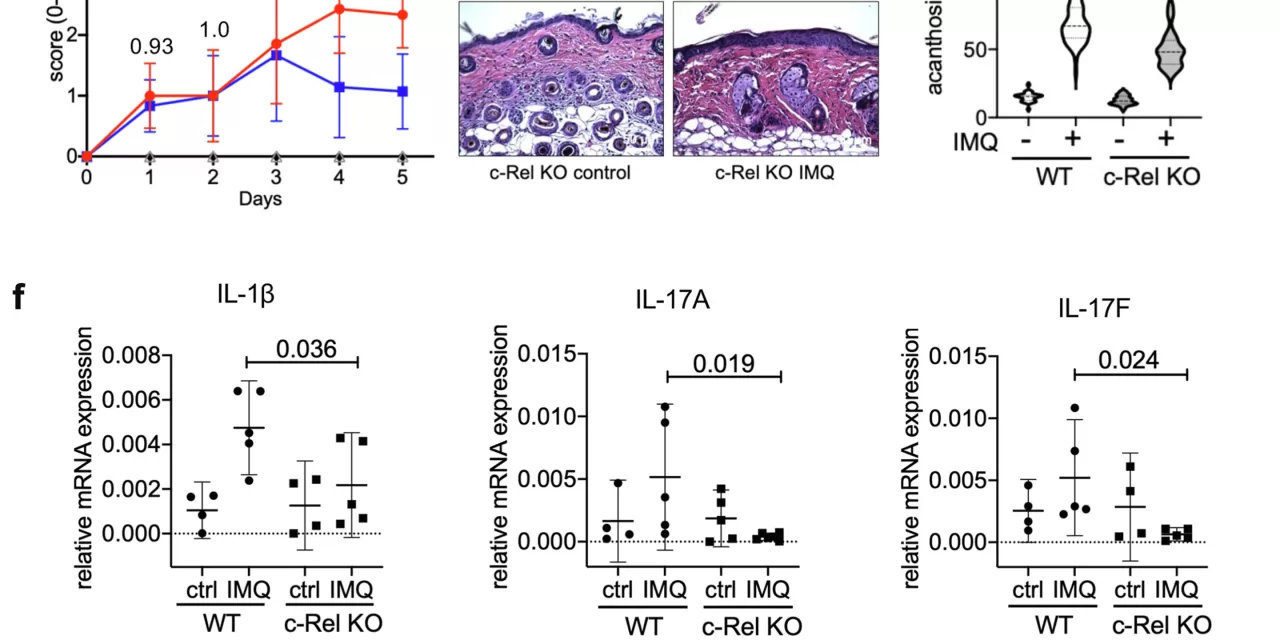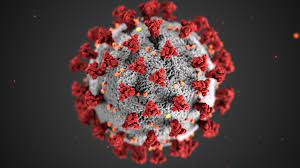A new study has identified a key protein, NF-kB c-Rel, as a significant contributor to the worsening symptoms of psoriasis, offering new hope for targeted treatment options for the millions affected by this inflammatory skin condition.
Psoriasis is a chronic condition that causes painful, red, and scaly patches on the skin, often due to the overactivity of immune cells designed to protect against infections. Researchers at Case Western Reserve University School of Medicine have pinpointed c-Rel as a crucial protein involved in exacerbating psoriasis when activated by immune system signals.
Published in eBioMedicine, the study reveals how c-Rel interacts with dendritic cells (DCs), a type of immune cell responsible for initiating the body’s defense mechanisms. Specifically, the research shows that c-Rel responds to immunological signals through Toll Like Receptor 7 (TLR7), a molecule involved in regulating the body’s innate immunity and inflammation. When activated, TLR7 can trigger the inflammation that worsens the symptoms of psoriasis.
Lead researcher Parameswaran Ramakrishnan, associate professor of pathology at the Case Comprehensive Cancer Center and Louis Stokes Cleveland VA Medical Center, emphasized the potential for targeting c-Rel and TLR7 in the development of more effective psoriasis treatments. “By focusing on c-Rel and TLR7, scientists might be able to create more targeted therapies that reduce inflammation and alleviate the discomfort that millions of people experience with skin inflammation,” he said.
The study involved examining skin samples from psoriasis patients and a mouse model with similar skin changes. Researchers found that the absence of c-Rel significantly alleviated the inflammation causing the red, scaly patches, demonstrating its critical role in the condition.
Angela Liu, the study’s lead author and a recent graduate from the School of Medicine’s pathology department, further highlighted the significance of these findings. “We observed higher levels of c-Rel in psoriasis patients, and mice lacking c-Rel were substantially protected from developing psoriasis,” Liu noted.
The study also explored the connection between TLR7, c-Rel, and viruses known to activate TLR7, such as HIV, HPV, and hepatitis C. These viruses are linked to the development of psoriasis, suggesting that TLR7-c-Rel signaling could be an essential mechanism in understanding and treating psoriatic disease.
The research team also proposed that their findings could be extended to other diseases where c-Rel and TLR7 play roles, such as systemic lupus erythematosus and wound healing in diabetes.
While the discovery marks an exciting step forward, the team acknowledges that more studies are needed to fully understand the molecular mechanisms behind TLR7-c-Rel signaling and its broader implications.
Disclaimer: The findings presented in this article are based on a recent study published in eBioMedicine. Further research and clinical trials will be necessary to translate these discoveries into viable treatments for psoriasis and other related diseases.
Source: Angela Rose Liu et al, NF-κB c-Rel is a critical regulator of TLR7-induced inflammation in psoriasis, eBioMedicine (2024). DOI: 10.1016/j.ebiom.2024.105452












